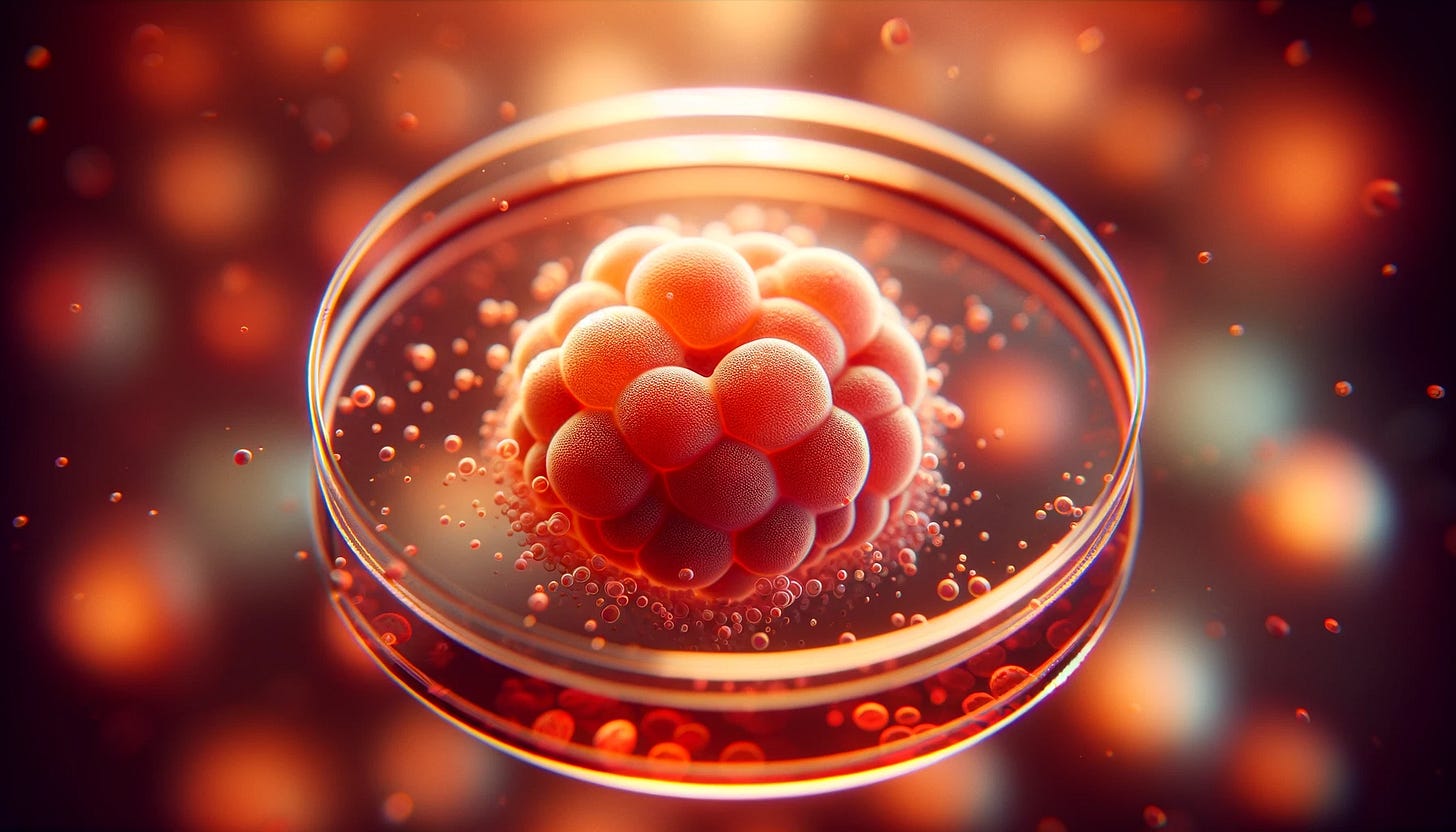In the last couple of years, scientists have made progress in making embryo-like structures from stem cells. These structures are not yet able to grow into full animals or humans, but newer techniques are showing improved results. Recently, scientists have successfully created complete models of human embryos from stem cells cultured in the lab, and managed to grow them up to the 14th day.
These artificial embryo-like structures will be useful in studying issues that come up during early phases of the pregnancy, which has historically been very hard to study. Eventually, it is likely that techniques improve to a point where these embryoids become functionally identical to normal embryos and at that point, these artificially created embryos will become an avenue for cloning. As a result, it is important to keep a tab on relevant research.
Here are distinct names or terms used to refer to embryoids in recent scientific literature[1] -
2C-like cells
3D blastocyst culture system
3D embryo-like gastruloid system
3D structures that resemble pre-implantation embryos
Artificial embryos
Asymmetric human epiblast
Blastoids
Embryo models
Embryo-like entities
Embryo-like structures
Embryoid bodies
Embryoids
ETC embryoids
ETS/ETX embryos
Gastrulation micropatterned colony
Gastruloids
Gastrulating embryo-like structures
Human cell culture models
Human cell cultures of early development (hCCMEDs)
Human embryo-like structures derived from pluripotent stem cells
Human embryoid model
Human epiblast models
Iblastoid
Integrated models of human development
Micropatterned 2D culture systems (2D gastruloids)
Micropatterned cultures of human pluripotent stem cells
Micropatterned hESC colonies
Micropatterned stem cell cultures
Models of early human development
Model of the human blastocyst
Multiple human embryo-like cells (MPECs)
Non-integrated models of human development
Organized embryo-like structures
Organoids/embryonic organoids
PSC-derived models of early embryo development
Polarized embryo-like structures
Post-implantation amniotic sac embryoids (PASE)
Post-implantation epiblast
Self-organizing hESCs
Self-organizing models of human development
Self-organizing stem cell model systems (SOSCS)
Synthetic embryo-like structures
Synthetic human entities with embryo-like features (SHEEFS)
Stem cell-based models of embryos
Stem cell-derived blastoids
Stem cell-derived models of embryo development
Stem cell-based embryo models/stem cell-based models of embryos
Structures that resemble embryos
Synthetic embryo-like entities
Synthetic embryo systems (SES)
Synthetic embryos
Synthetic embryoids
Synthetic entities with embryo-like features
Unless ethics committees exert a chilling effect, expect to see major progress in this field over the next 3-5 years. I wouldn’t be surprised if we see fully viable artificial embryos demonstrated by the end of 2026. Cloning possible by 2029?
References:
[1] https://stemcellres.biomedcentral.com/articles/10.1186/s13287-023-03448-8/tables/3





I hope sooner than that. I've been waiting for twelve years already. The grief I've carried every day hasn't killed me yet, but I don't know how much longer I can take the pain. I've been crazy enough to dream about raising an identical twin of my childhood friend for all this time, but only started to take it seriously about nine years ago.